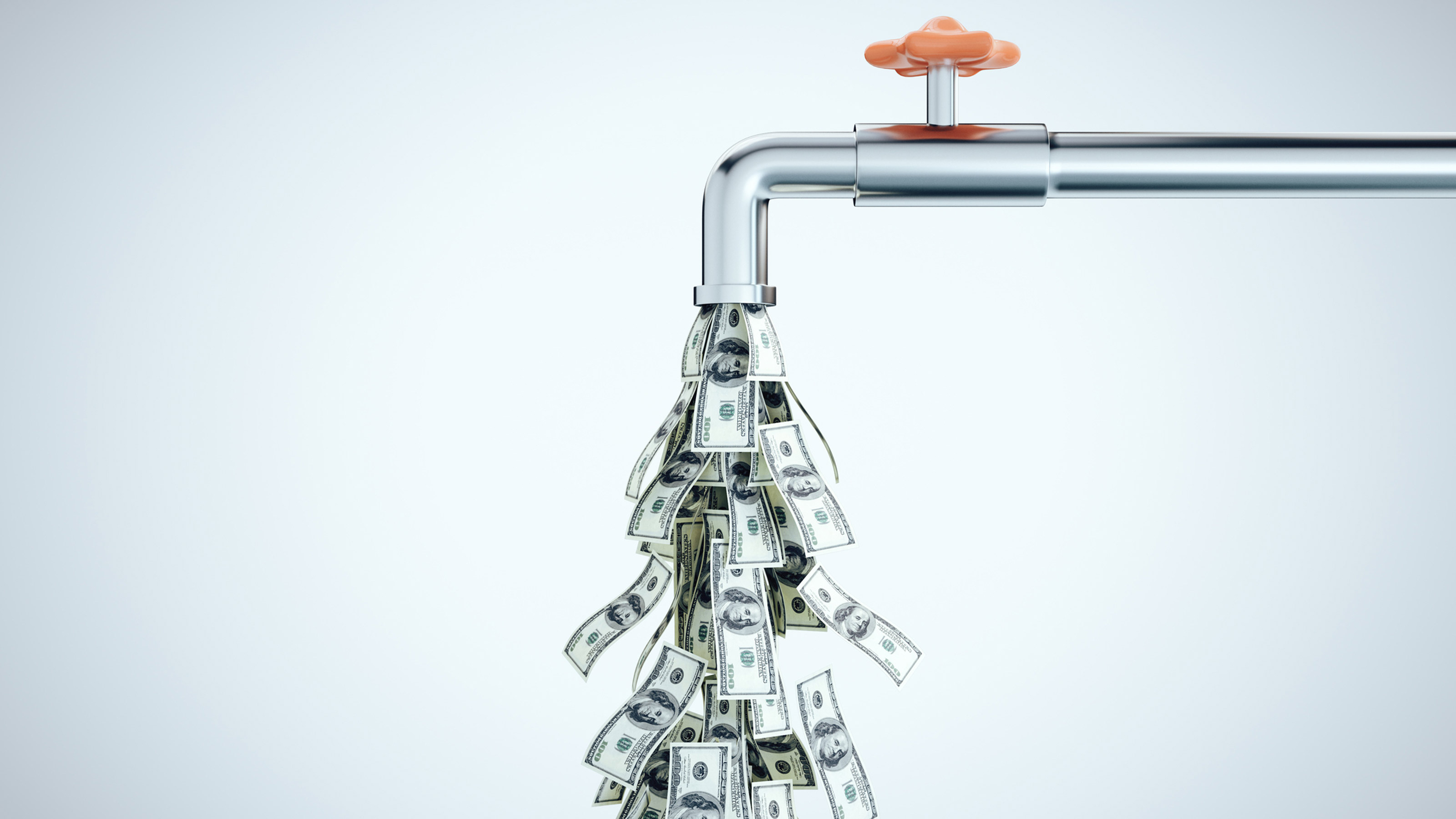How to Turn Your Retirement Account Into a 'Personal Pension Plus'
Just as you insure your home against the risk of fire and flood, so too can you insure another of your most valuable investments from risk: your retirement savings.


Retirement is a source of significant anxiety for Americans. It’s reported 40% of us fear retirement more than death. Outside of government jobs, pensions have nearly all disappeared. Important changes aimed at addressing some systemic issues are coming, but experts like Wade Pfau believe new Social Security legislation may not be enough. Combined with the potential of a recession (as the bull market keeps running), economic pressures posed by COVID-19, and 10,000 Baby Boomers retiring every day, this is hardly surprising.
With the near extinction of employer-provided pensions, Americans increasingly have to figure out their own retirement income plan, though many of us lack the tools or training to do so.
The 'Fragile Decade'
Financial literacy is an often-neglected area of education among Americans; this causes financial planning to feel opaque and overwhelming. For many, retirement boils down to, “How much money do I need to save by the time I retire?” But it’s not that simple, and not planning for sequence-of-returns risk is a major pitfall.

Sign up for Kiplinger’s Free E-Newsletters
Profit and prosper with the best of expert advice on investing, taxes, retirement, personal finance and more - straight to your e-mail.
Profit and prosper with the best of expert advice - straight to your e-mail.
Because retirement accounts are typically tied to the stock market, and the stock market is inherently volatile, it’s possible for an unexpected downturn to significantly impact a retiree’s income stream if it happens during the so-called “fragile decade” – the five years leading up to retirement and the five years that follow.
Simply put, if you experience significant losses due to some combination of withdrawals and poor performance during the fragile decade, it is difficult to recover. You’re in a position where your earning years are either behind you or almost behind you, and most of your retirement (if not all of it) is still ahead. Given that retirement can last 30 years or more, that could spell disaster during your most vulnerable years. That’s sequence-of-returns risk, or sequence risk.
Insuring Your Retirement Like You Insure Your Home
So, is your retirement at the mercy of the risks inherent in the stock market? Maybe. But it doesn't have to be. An annuity can be an effective way to ensure your retirement’s durability by reducing your income stream’s exposure to market risks. Just as you insure your home against the risk of fire and flood, so too can you insure another of your most valuable investments from risk: your retirement savings.
Some financial advisers have been hesitant to offer their clients annuities, for a variety of reasons. Among these reasons are high costs and limited liquidity, as well as the lack of a death benefit. Many believe they’re just too complicated. While these complaints were true of some types of annuities, they aren’t true in general. Not anymore.
These objections are being overcome as modern annuities tend to be simpler and less costly. These innovations have inspired many financial advisers to change their position on annuities; in fact, a 2021 survey conducted by RetireOne and Protective Life found fewer than a quarter of financial advisers would not recommend an annuity to a client, even if it was the best fit for the client’s needs.
But some of those objections still are worth examining. Most annuities do have liquidity restrictions and many are not historically good at protecting against inflation.
Contingent Deferred Annuities
A contingent deferred annuity (CDA) has the same overall advantage of other income annuities – guaranteed income regardless of stock market downturns, badly-timed withdrawals, and so forth – but this type of annuity sidesteps some of the remaining hurdles.
A CDA acts as a sort of “risk wrapper” for your IRAs, Roth IRAs and taxable brokerage accounts, but the insurance portion is unbundled from the underlying accounts so that investments in ETFs and mutual funds may be covered. The amount of income you receive from the CDA (your coverage base) is calculated from the total of your initial investment, and will not drop below that amount, no matter what the markets do. In fact, your coverage base may go up, and those annual income payments can range from 3% to 6%. Keep in mind that excess withdrawals CAN impact your coverage base, however.
The CDA’s income payments trigger when you need them and are paid by the insurance company for the rest of your life, even after your assets are depleted. Until then, your financial adviser continues to manage your retirement assets for you.
This means that, if the stock market trends very well, the accounts the CDA is safeguarding will grow and so will the amount that your income payments are based on, giving you a bigger cushion later in life. But if the market does poorly and your accounts shrink, your CDA continues to pay out at the same rate, regardless of how poorly your investments perform. And, subject to the claims paying ability of the insurance company, they continue even if the underlying accounts are depleted. It’s guaranteed income for life.
How Do CDAs Work?
That sounds great, right? But you’re probably asking how it all works and, perhaps most importantly, what it’ll cost. Again, this is insurance. It isn't free. But, it’s all more straightforward than you might think.
The first question to ask is: What do I want to cover? A CDA is typically designed to cover mutual funds and ETFs. The best CDAs offer many approved mutual funds and ETFs to choose from. The chances are your retirement accounts are already set up to work with them. You decide the total value you want to insure, and that sets your initial coverage base.
It’s important to reiterate that these funds stay where they are. Your financial planner continues to manage them, and you retain the same level of control you always had. In some cases, you can continue to add funds to that coverage base, too. Depending on the specific CDA you’re paying for, you may even increase the income you get from the CDA by doing so. You can also withdraw funds from your retirement account normally, though withdrawing funds too frequently can have an adverse impact on your annuity income.
Once you trigger your payments, those payments continue for life. They’re withdrawn from the covered accounts, but the rate of payment stays constant even if the value of the covered accounts drops – even if it drops to zero.
Another salient point: You don’t need to trigger payments if you don’t need that income, and you can cancel that coverage once you feel confident that your other retirement income streams are sufficient to maintain your quality of life. If you don’t want to pay fees for coverage you don’t need, then you don’t have to.
And speaking of those fees, you’re usually looking at something about 1% to 2.2% of the account value withdrawn each year from the accounts being covered. Those fees can be variable, based on the account value, or they can be fixed based on your total initial investment. A fixed fee means your fee is established when you establish your initial coverage base, and it remains constant as account values fluctuate. The fee does not increase if your retirement accounts give you particularly good returns, but the reverse is also true: If your accounts do poorly, you don’t see a reduction in your fees.
Here’s one of the best parts: Triggering your payments doesn’t necessarily trigger a taxable event. If you’ve been deferring your taxes with a Roth IRA, covering that Roth with a CDA allows you to draw income from that account upon retirement, without the usual tax implications of withdrawing money from a traditional IRA or a taxable account.
All these benefits make CDAs an efficient method for de-risking your portfolio as you near retirement. It’s a great way to make the fragile decade less fragile.
A 'Personal Pension Plus'
Pensions are rare these days. Entire generations have entered the workforce without the promise of a pension. Your parents may have pensions. But do you have one? Probably not.
A CDA can turn your existing retirement accounts into something very pension-like, one that can protect your income during that crucial “fragile decade.” And, with the dual advantages of being able to cover retail mutual funds and ETFs, and the inheritability of the asset, a CDA really is a “Personal Pension Plus.”
When dealing with investment accounts, it is easy to get tunnel vision about Return on Investment, and how much money you have saved. But what you’re trying to achieve is the best quality of life possible, once your earning years are over. You want to have the greatest possible spending power during your retirement. A CDA can help you do that by turning your retirement account into a guaranteed income stream…for life.
Get Kiplinger Today newsletter — free
Profit and prosper with the best of Kiplinger's advice on investing, taxes, retirement, personal finance and much more. Delivered daily. Enter your email in the box and click Sign Me Up.

Edward J. Mercier is president of RetireOne®. He has more than 25 years of experience spanning investment and insurance products, including sales, distribution, clearing and general management. He has held multiple senior leadership positions at Charles Schwab & Co., most recently as general manager of investment management distribution and clearing services.